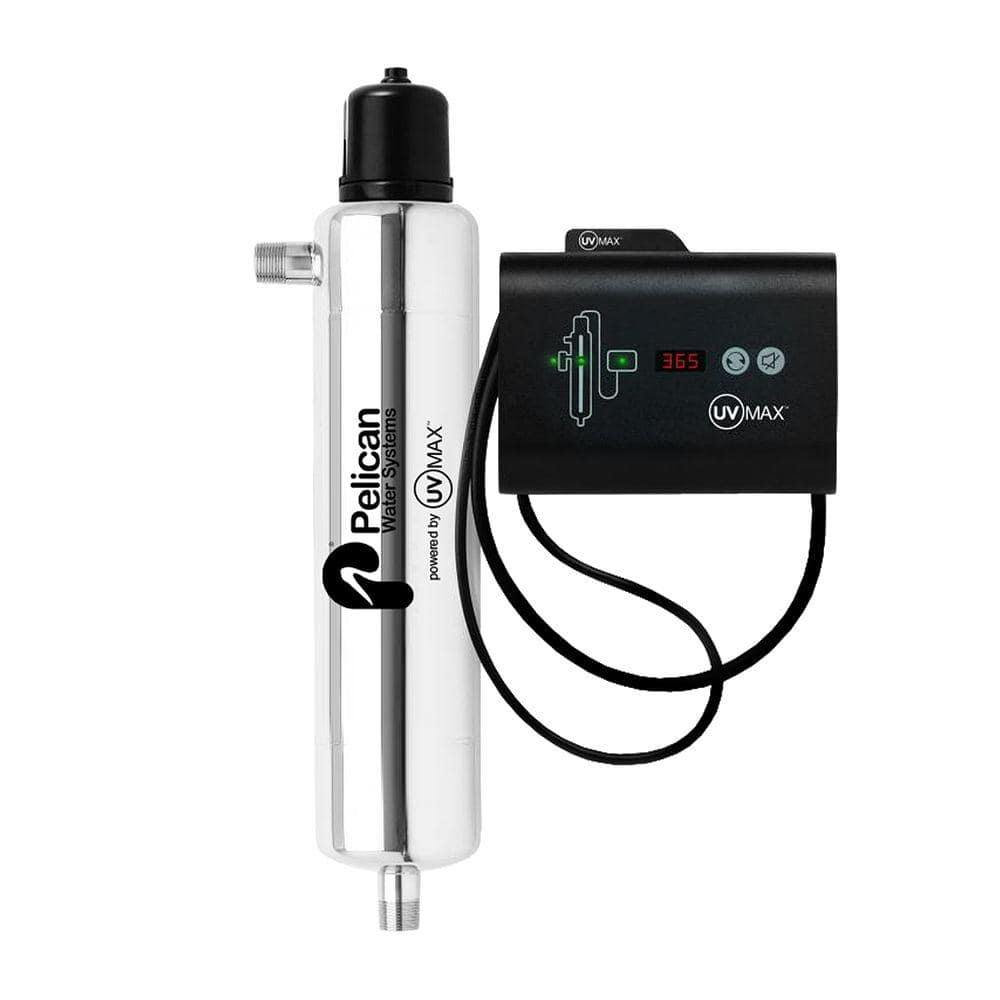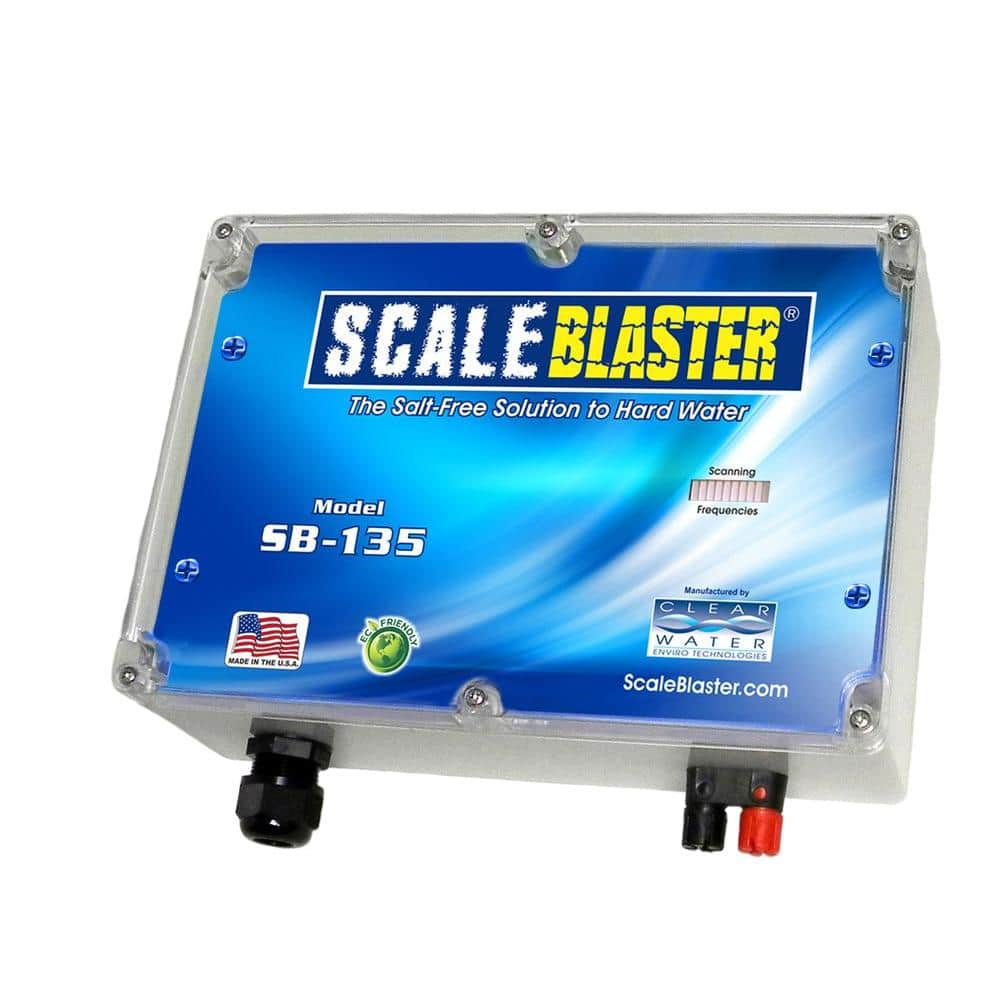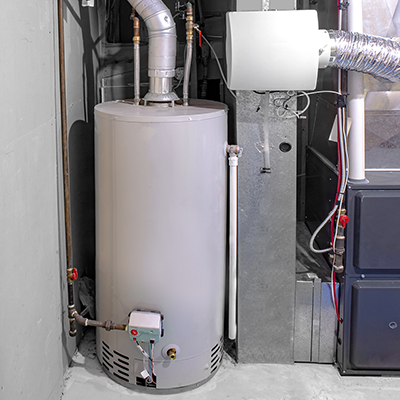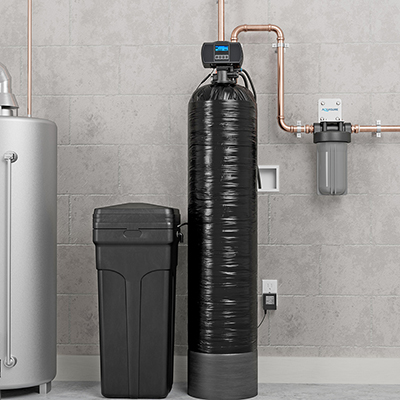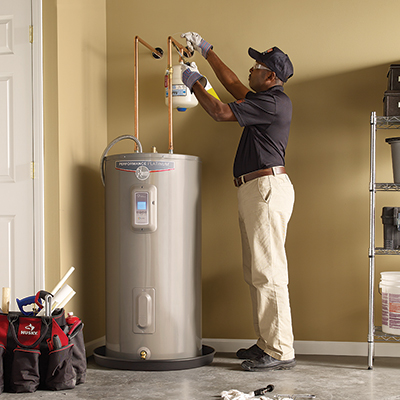How Does a Water Softener Work?

Last updated January 8, 2024
The term “hard water” refers to ground water that contains high levels of such minerals as magnesium or calcium. Water softeners are devices designed to reduce the amount or effects of minerals in your home’s water system. This guide answers the question, “How does a water softener work?” to improve the quality of your home’s water supply. If you're curious about how water softeners work, keep reading.
Table of Contents
What is Water Hardness?
Parts of a Water Softener
How Water Softeners Work?
What is Water Softener Regeneration?
Other Types of Water Conditioning and Filtration
What is Water Hardness?

- While rainwater is “soft” when it falls from the sky, as groundwater it flows into aquifers and can absorb minerals such as calcium, magnesium and trace metals.
- While safe to drink, hard water can inhibit the effectiveness of soaps and detergents, which can result in bathtub rings, spots on glasses and dishes, less effective clothes washing and less effective rinsing of soaps and shampoos.
- In addition, deposits from hard water can leave scale deposits and mineral build-up in coffee makers, water supply pipes, ceramic tile and water heaters. This can reduce the water flow, shorten the lifespan of a water heater and cause long-term damage to plumbing and fixtures.
- You can use a water testing kit to determine your water’s hardness level. A level of 1 grain per gallon (gpg) or higher technically indicates some water hardness, but 7 gpg often indicates that a water softener may be needed at your home.
Tip: For the most accurate assessment of your home water supply, contact a laboratory in your area that performs water tests.
Parts of a Water Softener

Learn more about the different parts of water softeners and how they work.
Water softeners are typically installed by water treatment services inside a home near the entry point of the water supply. They have the following primary parts:
- The softener tank, also called a mineral tank, is connected to the household water supply line and contains resin beads (plastic beads usually made from polystyrene) that draw the minerals from the water.
- The brine tank is connected by a fill tube to the softener tank and is used to regenerate the resin beads. The brine tank has a removable lid for refilling the water softener salt (or, alternatively, potassium).
- The discharge hose runs from the tank to a drainpipe or drywell.
- The control valve includes a meter that measures the amount of water entering the tank and passing through to the house. It initiates the regular regeneration cycle of the resin beads.
How Water Softeners Work?

What does a water softener do exactly?
- The first thing to know about how water softeners work is an understanding of the ion exchange. This is the process most water softener systems use to convert hard water into soft water.
- The water softener process begins when water enters the top of the softener tank and percolates through the resin beads.
- The resin beads have a negative electric charge, which attracts the positive charge of hard water particles such as calcium and magnesium. The particles, called ions, remain on the beads and soft water exits the tank for use in your house.
- If you have one installed and are wondering, “How do I know my water softener is working?” you can probably feel a difference in the water quality when you take a shower, or notice that soap or detergent create more suds. Alternately, if you see hard water spots on glasses or dishes or feel itchy after taking a shower, the water softener may not be working properly.
Tip: Water softener manufacturers suggest you can reduce the amount of detergent and other soaps you’ve been using after a water softener is installed.
What is Water Softener Regeneration?

While water softening can remove harmful minerals from your water supply, it can increase the sodium content of your water. In this case, a small amount of sodium is added to your water but not salt, making it safe to drink. Another good point to know about how water softeners work is through a process called regeneration, where water softeners clear the hardness ions from the beads so they can continue to function properly. What does a water softener do through the process of regeneration?
- Usually the water softener has a preprogrammed setting for regeneration based on the size of the home and amount of water used, such as once every 10,000 gallons.
- The unit’s control valve sends a brine solution, a mixture of sodium and water, from the brine tank through the fill tube into the resin bed. The salt attracts the minerals from the beads, and the excess brine rinse water, with the calcium and magnesium, is flushed from the system via the discharge hose.
- Regeneration cycles occur at least once a week, but often more. The frequency of regeneration cycles depends on numerous factors, including how hard your water is and how much water you use. The harder the water and the more water used in your home, the more frequent regeneration cycles will need to be. Regeneration cycles can use 50 gallons of water on average, but this will depend on the water softener system. Unless you have a dual-tank water softener, the equipment cannot be used during the regeneration cycle.
- Resin beads do not need to be replaced. However, for proper water softener maintenance, periodically refill the brine tank with water softener salt. The frequency with which you will need to replace the salt depends on your water softener system’s salt tank size and how often regeneration cycles occur. Many residential models use about 10 pounds of salt per week, or 40-50 pounds per month.
Tip: Dual-tank water softeners contain two resin tanks so that one tank is always available for use while the other is in the regeneration cycle, ensuring that a household can access soft water any time of day or night.
Other Types of Water Conditioning and Filtration

There are many types of water softeners and water filtration systems:
- Salt-free water softeners use a potassium-chloride salt substitute instead of sodium to remove minerals from hard water. Potassium is considered more environmentally friendly but is also more expensive than sodium. People concerned about their sodium intake may prefer these types of softeners.
- Water conditioners or descalers do not remove the hard minerals in your water, but instead use different methods reduce buildup of scale in pipes and appliances. Many use non-chemical means, such as electronic signals, to change the bonding properties of minerals, preventing them from making the attachments that lead to scale deposits. Water conditioners tend to be less expensive than water softeners.
- Reverse osmosis is another method to reduce the potentially harmful effects of impurities in water supply. Reverse osmosis systems use filtration to purify water by forcing tap water through a semipermeable membrane to remove hard water mineral deposits and other contaminants.
- Another option is to install a whole house water filter or a water filter beneath the sink.
Through the removal of hard water minerals, softened water generally goes easier on your plumbing fixtures, makes your detergent more effective and extends the life of your washing machine and hot water heater. Learn more about The Home Depot’s water treatment system installation services,
which include free in-home consultation.
